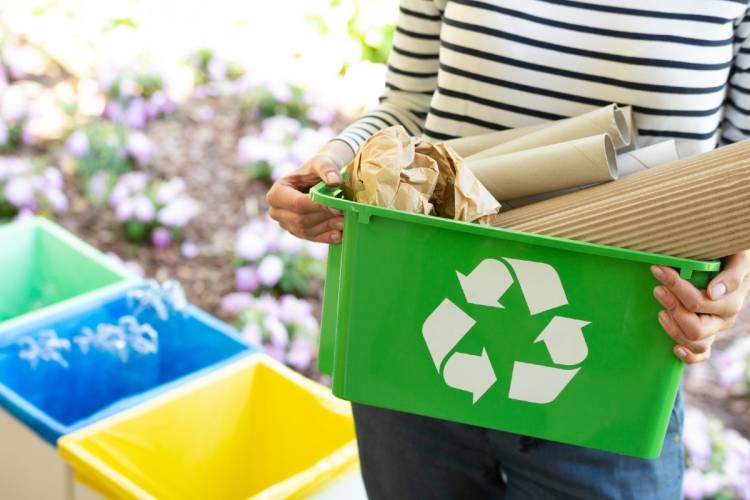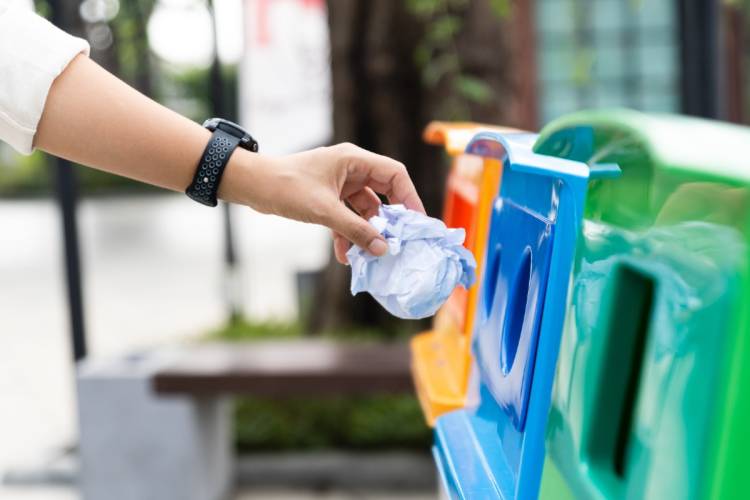How to recycle correctly: 5 common mistakes
Learn to recycle correctly. Avoid these 5 common mistakes and find out how to separate waste properly with our advice. Look after the planet!
IT’S ECO, IT’S LOGICAL
Share

Where do I throw this away? This is a common question that we face when at the container with our waste in hand: blue or yellow? Brown? Is this for the clean area?... We give you information about the most commonly incorrect beliefs and the correct option for each item of waste.
5 common mistakes when recycling
1. Thinking that all types of glass can be recycled in the green container
Crystal is not glass and is not recycled in the green container. It goes in the clean area. Goblets or broken glasses and mirrors cannot be recycled in the green container. These items are not made of glass, but of crystal, which contains lead oxide. You also cannot recycle car windscreens in the green container, nor headlights or crystal medication jars.
2. Thinking that Tetra pack ‘bricks’ are not containers because they are made of cardboard
The ‘bricks’ used for milk or juices are made from cardboard, yes. But they also contain plastic and aluminium, and because of this, they are packaging that is recycled in the yellow container. This is one of the most common mistakes detected in recycling plants, although the main material is cardboard, it is packaging that is made with other materials, and it would be very complicated to separate them during the recycling process.

3. Thinking that used paper still goes in the blue container
When dirty or coated with food waste or organic materials, napkins, tissues or kitchen roll cannot be recycled in the blue container. During the recycling process, it is very complicated to separate the waste from the paper. So, if the napkin or paper in question is dirty, the right place for it is the organic waste container, the brown one. In this way, it can be treated correctly.
A separate mention needs to be given for wet wipes or wet toilet paper as, due to its composition, the majority contains plastic materials and should be disposed of in the grey container, the one for waste. The same is true for nappies and sanitary pads.
4. Treating aluminium foil as if it were just another bit of packaging
Where do you dispose of aluminium foil? It’s a very common question and it is also a material which, due to its food preservation properties, is widely used practically every day. Tin foil is just another piece of packaging and, as such, it can be recycled in the yellow container. The yellow container, the one for packaging, is the one that throws up the most questions when it comes to ‘choosing’ the right container, but in reality, it is the one that should fill up the fastest in our home because of the type of consumption we have.
5. Thinking that bags can be thrown into any container
Recycling well takes time and space, and most of all, it requires awareness at home. The objective: to look after the planet and us, which is always worth doing. If after making this ‘effort’ we throw our waste in a plastic bag into a specific container, the task will not have been worth it. Putting all the cardboard into a plastic bag and throwing it, as it is, into the blue container or doing the same when throwing away glass is not the most advisable thing to do, and it makes the work of the recycling plant more difficult. It’s a shame, because you have already contributed your little grain of sand to separating the waste beforehand. Remember to separate container from contents when throwing away waste or take a recyclable bag that you can use many times to ‘transport’ your waste to the container.






